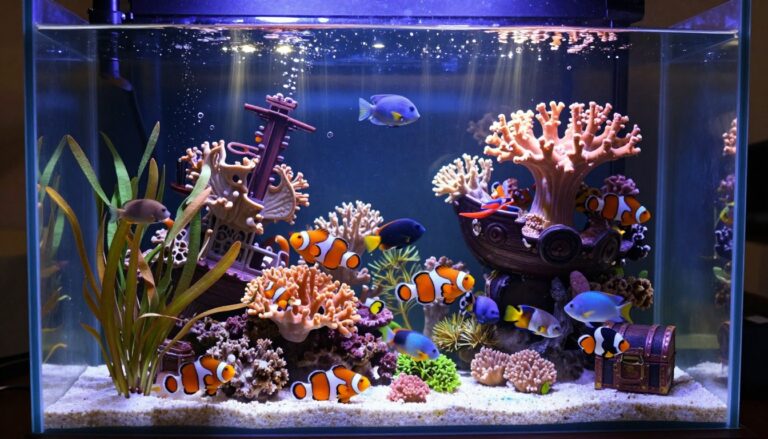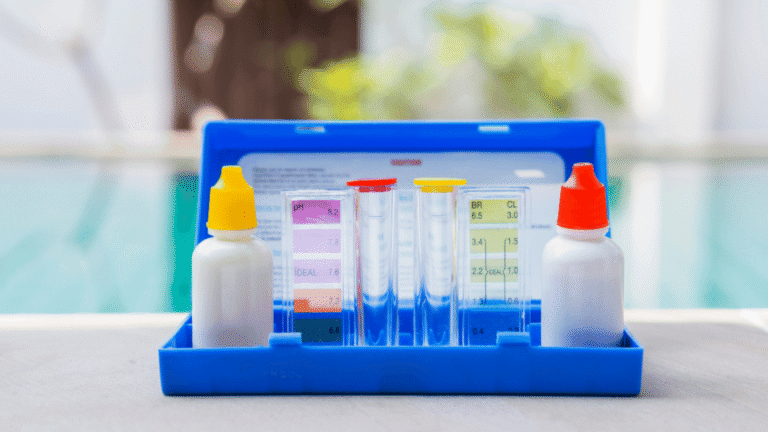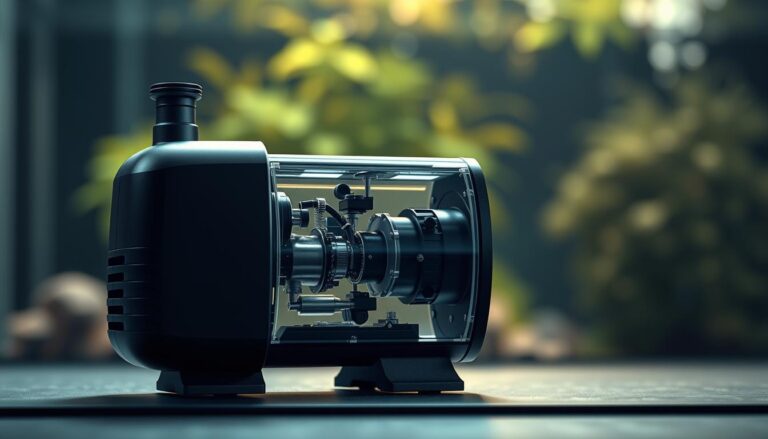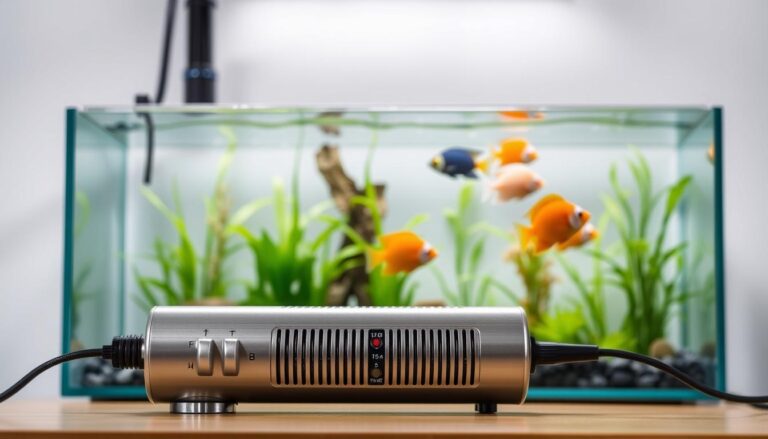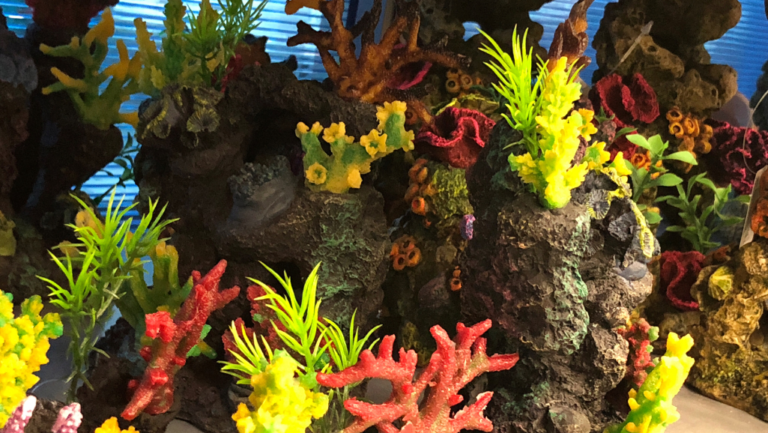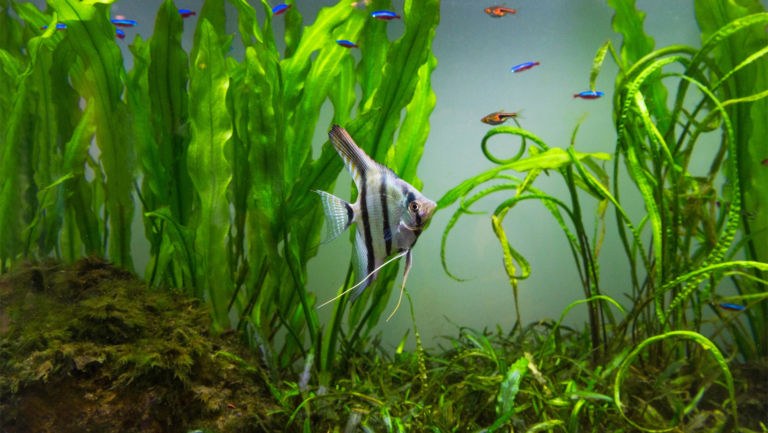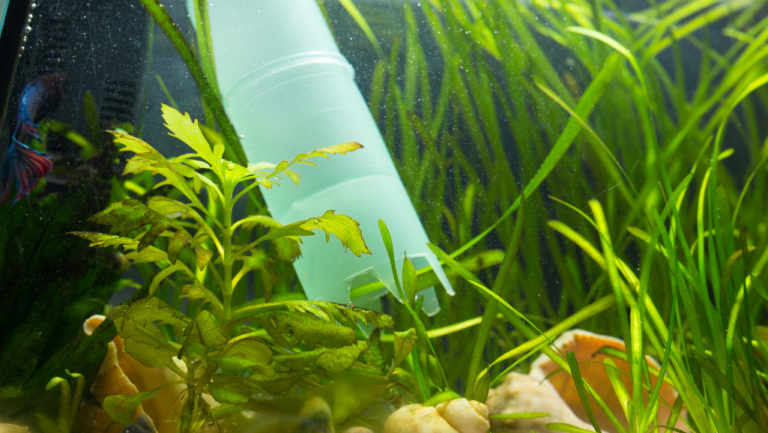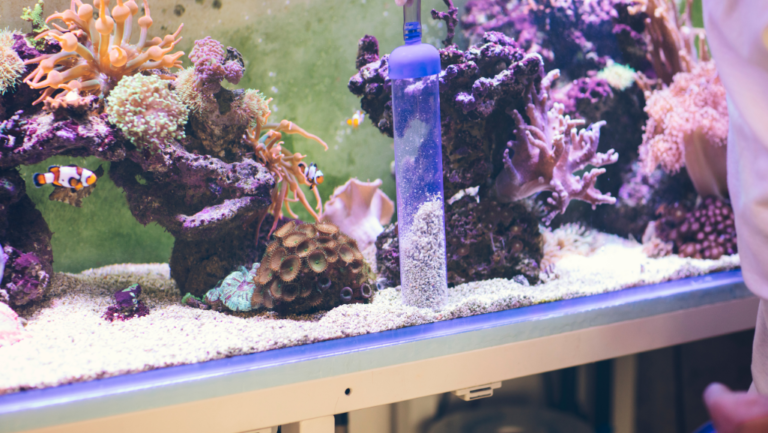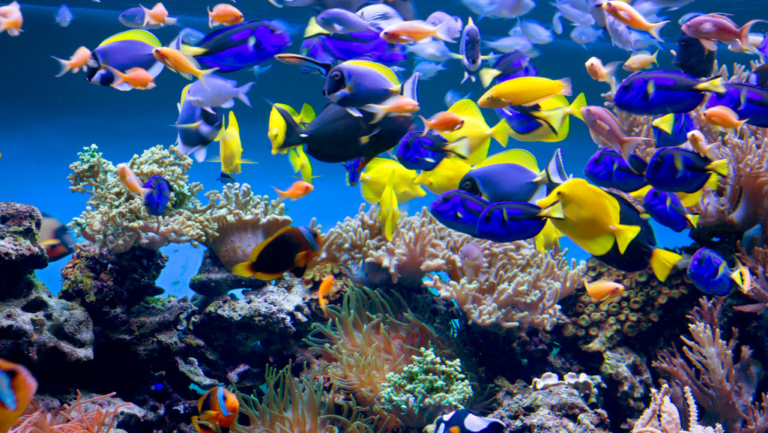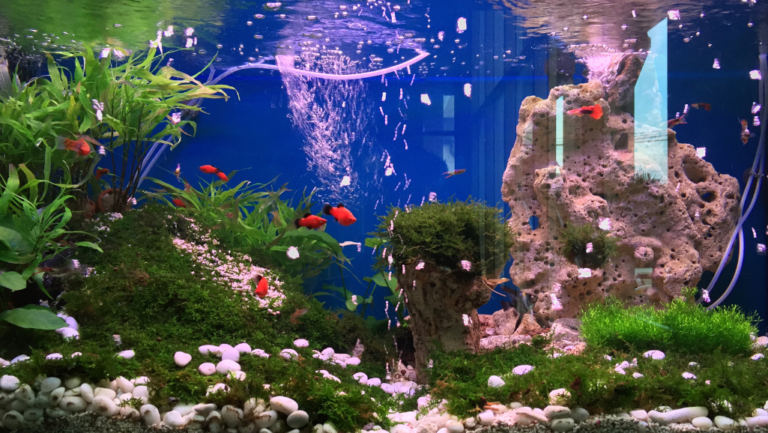Welcome to the world of aquariums — compact, living ecosystems that bring color and motion to any room. Creating and sustaining a healthy aquarium requires understanding how water, plants, fish, and equipment interact. Good aquarium care and maintenance start with water quality: regular testing and timely adjustments keep your fish and plants thriving.
When setting up a new tank, be patient. The tank’s biological cycle commonly establishes within 2–6 weeks depending on temperature, seeded media, and whether you use bacteria starters. During this period, make sure you introduce fish slowly and monitor ammonia and nitrite closely rather than stocking quickly.
Ongoing maintenance pays off. Expect to spend about 1–2 hours per week on routine tasks: partial water changes, gravel vacuuming, and quick equipment checks. For typical tropical freshwater community tanks, a good baseline is 10–25% water change per week — adjust within that range based on stocking level, plant load, and test results.
Key Takeaways
- Water quality is the foundation of a healthy aquarium ecosystem
- Allow 2–6 weeks for the cycling process to establish beneficial bacteria in a new tank
- Perform regular weekly maintenance to protect fish health
- Aim for 10–25% water change weekly for most tropical freshwater tanks; increase if heavily stocked
- Set aside 1–2 hours per week for aquarium maintenance
- Patience, consistent testing, and gradual changes are vital for long-term success
Continue reading for a step-by-step maintenance plan, a testing checklist, and equipment recommendations to match your tank size and goals.
Understanding the Aquarium Ecosystem
https://www.youtube.com/watch?v=wKECf4A1u08
Creating a thriving aquarium ecosystem requires attention to the water, the organisms living in it, and the equipment that supports them. The core to success is managing the water parameters and completing the biological cycling process so your tank becomes a stable, safe home for fish and plants.
The importance of water quality
Water quality is the foundation of a healthy aquarium. Regularly test temperature, pH, ammonia, nitrite, and nitrate so you can catch problems early. Stable water parameters support fish health, promote plant growth, and reduce stress and disease risk.
Cycling your aquarium
The biological cycling process establishes beneficial nitrifying bacteria that convert toxic ammonia into nitrite and then into less harmful nitrate. Cycle time varies by method and conditions — commonly between 2 and 6 weeks — depending on factors like temperature, whether you add seeded media, and the ammonia source used. Make sure to monitor aquarium water closely and avoid adding many fish until ammonia and nitrite read 0 ppm.
Balancing the nitrogen cycle
The nitrogen cycle is the natural process that breaks down waste in your tank. Beneficial bacteria mainly colonize filter media and the substrate (and biofilters), where they process dissolved waste. Keeping the cycle balanced requires regular water testing, partial water changes to control nitrate, and using live plants to absorb excess nutrients.
- Monitor ammonia, nitrite, and nitrate regularly (use a reliable test kit)
- Perform targeted water changes if nitrate rises above your target level
- Use live plants and stable filtration to help absorb and process nutrients
Remember: achieving a well-balanced aquarium takes time and consistent care. Follow the testing routines and equipment guidance in the equipment and testing sections to keep your tank stable and healthy.
Essential Equipment for Successful Aquarium Care
Setting up a thriving aquarium depends on choosing the right core equipment: reliable filtration systems, appropriate aquarium lighting, and accurate temperature control. Good equipment makes it easier to maintain stable water conditions and supports fish and plant health.
Choosing the Right Filtration System
A strong filter is the heart of effective filtration. Aim for a unit that provides mechanical, chemical, and biological stages and is sized for your tank. Use a filter rated to turn over the volume of your tank roughly 3–5× per hour as a baseline; adjust upward for heavily stocked tanks or systems that produce more waste.
Common filter types include hang-on-back (HOB), canister, and sponge filters — pick one that fits your tank size and maintenance preferences. Maintain and inspect your filter media monthly: rinse mechanical media in tank water, replace chemical media like activated carbon per manufacturer guidance, and preserve biological media to keep beneficial colonies.
| Tank Size (Gallons)Minimum Flow Rate (GPH) | |
| 10 | 40 |
| 20 | 80 |
| 40 | 160 |
Selecting Appropriate Lighting
Aquarium lighting influences both fish health and plant growth. For basic fish-only setups, low to moderate light is sufficient; planted tanks need higher output. Instead of relying solely on “watts per gallon,” consider LED output in lumens or PAR for planted tanks — aim for lighting suited to the plant species you keep (low, medium, or high demand).
LED fixtures are energy-efficient and run cooler than older lamp types. Choose adjustable spectrum or dimmable LEDs to match plant needs and reduce algae pressure.
Importance of Heaters and Thermometers
Aquarium heaters keep water temperature stable — a key factor for fish health. A general guideline is 3–5 watts per gallon, but always account for room temperature and tank insulation. For tanks over 40 gallons, using two smaller heaters provides redundancy and more even distribution of heat.
Use a quality digital thermometer and check temperature daily or set up an alarm for fluctuations. Combine heaters with proper filtration and, when needed, aeration (air stones) to maintain oxygen levels, especially in warmer water.
“Maintaining the right temperature is crucial. Most tropical fish thrive in water between 74 to 77 degrees Fahrenheit.”
Invest in dependable equipment sized for your tank and maintain it regularly. Clear maintenance steps (monthly filter checks, scheduled media replacement, and daily temperature checks) will keep your system running smoothly and make aquarium maintenance predictable and manageable.
Water Parameters and Testing

Keeping your aquarium water within target ranges is essential for the health of your fish and plants. Regular testing helps you spot problems early and make targeted fixes. Below are common freshwater targets and guidance on how often to check them.
Typical freshwater guidance (adjust for species): pH roughly 6.5–8.0 (many community species prefer ~6.8–7.8); ammonia and nitrite should read 0 ppm; nitrate ideally <50 ppm for general tanks, and <20 ppm for planted or sensitive setups. General hardness (GH) commonly falls between 4–8 dGH for many community aquaria, but some species require different hardness levels.
Use a reliable test kit to monitor these parameters. API Master Test Kits provide individual liquid tests for ammonia, nitrite, nitrate and pH; 5-in-1 test strips are useful for quick checks but confirm with liquid tests for accuracy. Also test new tap water so you know what additives or conditioners are needed.
| ParameterIdeal RangeTesting Frequency | ||
| pH | 6.5 – 8.0 (species-dependent) | Weekly |
| Ammonia | 0 ppm | Twice weekly (more often during cycling) |
| Nitrite | 0 ppm | Twice weekly (more often during cycling) |
| Nitrate | <50 ppm (aim <20 ppm for planted tanks) | Weekly |
If ammonia or nitrite rise above 0 ppm: stop feeding, perform an immediate partial water change, check your filter and reduce bioload. If nitrate climbs above your target, perform partial water changes and consider adding fast-growing live plants to help absorb excess nutrients.
Create a simple test water log (date, parameter values, actions taken) and review it weekly. Testing more often during a new tank’s cycle or when fish show stress signs ensures you maintain stable water quality for a healthy aquarium.
Regular Cleaning and Maintenance Routines

Consistent cleaning and a predictable maintenance routine are the best defenses against water-quality problems and disease. Regular tasks remove excess waste, keep filter systems performing, and prevent algae from taking over. Below are recommended methods, frequencies, and a clear baseline you can adapt to your tank.
Performing Water Changes
Partial water changes are the most powerful tool for controlling nitrates and resetting water chemistry. For most stable tropical freshwater community tanks, aim for 10–25% water change weekly. Increase the percentage or frequency for heavily stocked tanks, new setups, or if test results show high nitrate or persistent ammonia/nitrite spikes (in extreme cases experienced hobbyists may temporarily use larger changes — e.g., up to 50% — while addressing the underlying issue).
When doing water changes: match new water temperature and treat tap water with a conditioner, add water slowly to avoid stressing fish, and siphon from the substrate to remove decomposing material. Make sure to record the volume changed in your maintenance log.
Gravel Vacuuming Techniques
Vacuum the gravel or substrate during water changes to remove trapped waste and uneaten food. Use a siphon or gravel vacuum and clean one section of the substrate at a time to avoid disturbing beneficial colonies or scaring fish. Technique tips: run the vacuum to remove dirty water for several minutes per section, keep room lights off for 15–30 minutes to reduce fish stress, and avoid removing all debris at once — stagger deep cleanings across weeks.
Algae Control Methods
Algae control is a combination of good habit and tools. Reduce excessive lighting and avoid overfeeding to lower nutrient input. Use an algae scraper or magnetic cleaner weekly to remove film from aquarium glass. For persistent problems, add algae-eating species (snails, shrimps, or herbivorous fish appropriate to your tank), adjust fertilization in planted tanks, and address high nitrate or phosphate levels via targeted water changes.
| TaskFrequencyImportance | ||
| Water Changes | Weekly (10–25%, adjust to stocking) | High |
| Gravel Vacuuming | Weekly during water changes / Bi-weekly deep clean | Medium |
| Algae Removal | Weekly | Medium |
| Filter Maintenance | Monthly (inspect) / Replace chemical media as needed | High |
Filter care: rinse mechanical media in removed tank water (not tap water) to preserve beneficial filter media bacteria, replace chemical media like activated carbon per manufacturer guidance, and avoid over-cleaning biological media. A well-maintained filtration system reduces the need for emergency water changes.
Aquarium Care and Maintenance: Tips for Success
Good long-term upkeep combines steady routines with monitoring. Here are practical tips to keep your system stable:
- Start with a tank size that helps stability — 20 gallons is a good beginner choice for many community setups.
- Introduce new fish slowly: add a few at a time and monitor water parameters for a week before adding more.
- Quarantine new arrivals for 2–4 weeks to reduce disease risk; adjust duration for species and observed symptoms.
- Use a quality power filter sized for your tank; clean or service it monthly to maintain flow and biological function.
- Keep a weekly maintenance checklist (water change volume, gravel vacuum sections, filter checks, algae removal) and log results to spot trends.
“Maintaining a freshwater aquarium is simpler than a saltwater one, but it still requires attention to detail and regular care.”
Quick checklist for weekly maintenance: test key parameters, perform your scheduled 10–25% water change, vacuum a portion of the substrate, clean the glass and check equipment. For monthly maintenance: deep-clean mechanical media, inspect heaters and tubing, and replace chemical media if used.
By standardizing these routines and adjusting based on test results, you’ll minimize surprises and keep your aquatic community healthy and vibrant.
Proper Fish Nutrition and Feeding Guidelines

Fish nutrition is a cornerstone of aquarium health. Choose high-quality food formulated for your species and feeding style, and avoid overfeeding to protect water quality. A balanced diet helps fish resist disease, grow properly, and display their best colors.
Nutrition needs vary by species. As a general guide: community freshwater fish do well on commercial flakes or pellets with moderate protein (25–40%), while growing or carnivorous species need higher protein. Marine and demanding species often require specialized diets and higher-quality oils (omega-3s). Instead of a one-size-fits-all percentage, pick food labeled for your fish type and compare guaranteed analysis.
Feeding frequency and portion control matter more than exact nutrient percentages. Feed small amounts 1–2 times daily for many community fish; 2–3 small feedings can work for higher-metabolism species. A practical rule: feed only what fish consume within 2–3 minutes, remove uneaten food, and note leftover amounts in your maintenance log to avoid nutrient spikes.
| NutrientNotes | |
| Protein | Species-dependent (community freshwater 25–40%; carnivores higher) |
| Lipids | Provide energy; quality matters more than exact % |
| Carbohydrates | Used for energy; excessive carbs can increase waste |
Supplement diets periodically with frozen or live foods (brine shrimp, daphnia, bloodworms) to increase variety and nutrition. For picky or specialized species, follow manufacturer guidance and consider vitamin supplements sparingly.
Prevent overfeeding: use a feed cup or small spoon to measure, observe fish during feeding, and remove uneaten pellets or flakes. Overfeeding leads to higher waste, ammonia spikes, and extra maintenance.
Plant Care in Freshwater Aquariums
Aquatic plants improve aesthetics and water quality by absorbing nutrients. Choose species that match your tank‘s light, temperature, and substrate conditions. Common beginner-friendly choices include Amazon Sword, Anubias, and Java Fern.
Selecting Appropriate Aquatic Plants
Match plants to conditions: many popular plants thrive in pH 6.5–7.8 and temperatures roughly 72–78°F. Check specific species needs before buying. Lighting needs vary — low-light plants (Anubias, Java Fern) tolerate modest LED setups, while high-light plants need stronger LED output and often CO2 supplementation.
Fertilization and Trimming Techniques
Use root tabs for heavy root feeders and liquid fertilizers for leaf-feeding plants. Aim for nitrate levels under ~20 ppm for planted tanks (planted setups can tolerate lower nitrates because plants use them). Keep phosphate low to limit algae. Trim regularly with plant scissors, remove decaying leaves, and prune to maintain shape and light penetration.
Balancing Plant Growth with Fish Population
Live plants help absorb excess nutrients from fish waste and uneaten food, reducing algae and improving aquarium quality. Mix slow- and fast-growing species to balance nutrient uptake. Ensure substrate depth and type suit root feeders — add nutrient-rich substrate or root tabs for demanding species.
| Plant TypeGrowth RateLight RequirementCO2 Need | |||
| Amazon Sword | Moderate | Medium to High | Low to Medium |
| Anubias | Slow | Low to Medium | Low |
| Java Fern | Slow | Low to Medium | Low |
| Vallisneria | Fast | Medium to High | Medium |
Maintenance tip: coordinate plant care with your routine water changes and filter cleaning. For planted tanks, lighter weekly water changes (e.g., 10–20%) and solid filtration keep nutrients balanced without stressing plants. Log plant trimming and fertilization in your maintenance notes to track responses and avoid algae outbreaks.
Preventing and Treating Fish Diseases
Keeping your fish healthy starts with prevention: stable water quality, appropriate stocking levels, and good quarantine practices. Regular observation — watching behavior, appetite, coloration, and fins — lets you catch problems early when treatment is most effective.
Common illnesses and quick responses:
| DiseaseSymptomsTreatment | ||
| White Spot (Ich) | Small white dots on body and fins; rubbing on objects | Raise temperature slightly (within species-safe range), perform frequent small water changes, use a recommended ich treatment; quarantine affected fish if possible |
| Fin Rot | Frayed, disintegrating fins, sometimes reddened edges | Improve water quality, reduce stress, use antibacterial medication if needed |
| Dropsy | Swollen body, scales sticking out | Often indicates internal infection — improve water, isolate fish, consult an aquatic vet for antibiotics |
| Mouth Fungus | White cotton-like growth around mouth | Improve water, use antifungal medication, quarantine if severe |
For serious or unclear cases, consult an aquarium specialist or aquatic veterinarian. Prevention — consistent maintenance, proper feeding, and avoiding overcrowding — is far easier than treatment.
Creating a Suitable Environment for Fish
A successful fish tank setup is built around compatibility, space, and environmental stability. Design the habitat to match the species’ needs so they can thrive with minimal stress.
Choosing Compatible Fish Species
Research temperament, adult size, and water requirements before adding a species. Beginner-friendly community choices include guppies and platies; solitary or territorial species like bettas need different setups. For saltwater beginners, damselfish and clownfish are commonly recommended but still require proper care.
Providing Adequate Space and Hiding Spots
Provide enough swimming space and hiding places to reduce stress. A 20-gallon tank is a practical starting point for many community setups, but larger tanks are more stable. Use rocks, driftwood, and plants to create territories and refuge areas tailored to species-specific behaviors (e.g., caves for cichlids, dense plant cover for fry).
Managing Stress Levels in Aquarium Inhabitants
Stress weakens immune systems and increases disease risk. Keep pH and temperature steady within species-appropriate ranges (many community freshwater fish do well around pH 6.8–7.8 and 72–78°F — confirm per species). Maintain ammonia at 0 ppm and stable conditions with reliable filter systems and regular changes. Make sure to introduce fish slowly and avoid sudden parameter swings.
| ParameterRecommended Level | |
| pH | 6.8 – 7.8 (species-dependent) |
| Temperature | 72°F – 78°F (common tropical range; check species) |
| Ammonia | 0 ppm |
Quarantine new fish for 2–4 weeks in a separate, simple tank (heated and filtered) and observe for illness before adding them to your main tank. During quarantine, test water frequently and treat visible parasites or infections early.
Design hiding spots with species habits in mind: open swimming areas for schooling fish, caves or rockwork for territorial species, and dense planting for species that prefer cover. With thoughtful setup and attentive care, your aquarium inhabitants will be healthier and less prone to disease.
Conclusion
Creating a successful aquarium takes dedication, consistent care, and attention to water quality. When you understand the ecosystem in your tank and follow a simple maintenance routine, your aquatic pets will be healthier and your hobby more rewarding.
Keep guidance consistent across your setup: for most tropical freshwater community tanks, aim for 10–25% water changes weekly as a baseline; increase change volume or frequency for heavily stocked systems or when tests show high nitrate or spikes in ammonia. Smaller monthly changes (1–10%) are generally insufficient for actively stocked aquariums. Make sure your approach matches tank size, stocking level, and plant load.
Use activated carbon (charcoal) for targeted removal of dissolved organics, odors, and discoloration — it doesn’t replace regular water changes or directly reduce nitrogenous waste, but it can improve overall water quality when used correctly. Provide aeration with air stones or adequate surface agitation to maintain oxygen levels, especially in warmer water or during temporary equipment issues. Automatic feeders can help maintain consistent feeding when you’re away, but avoid overfeeding — excess food raises waste and increases maintenance.
Invest in good filter equipment and follow the testing routines described earlier. Test your tank water regularly (weekly for routine checks) and test your tap water initially so you know what adjustments or conditioners are necessary. Log results and maintenance actions to spot trends early.
Final CTA: Download our one-page aquarium care checklist and 12-month maintenance calendar to simplify your routine and keep your aquarium thriving.

